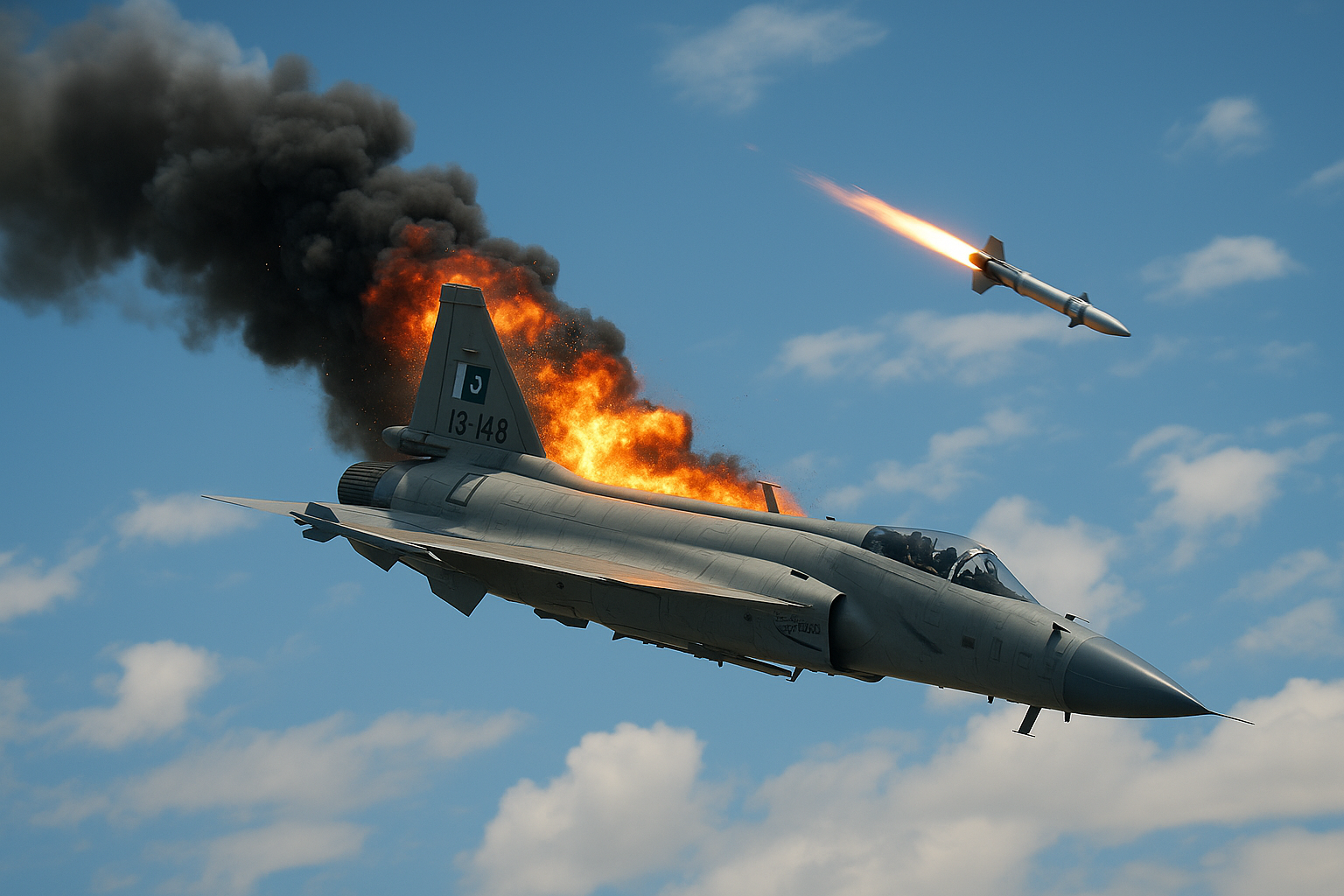In a significant escalation of military tensions, Indian forces have reportedly shot down multiple Pakistani fighter jets in the contentious Kashmir region, specifically in the Baramulla, Budgam, and Srinagar sectors of Indian-administered Jammu and Kashmir. The incident, which took place early Saturday morning, has intensified fears of a potential broader conflict between the two nuclear-armed neighbors.
Defense sources indicate that the Pakistani aircraft were intercepted as they approached Indian airspace near the Line of Control (LoC). Indian air defense systems were activated to engage the incoming jets, resulting in multiple successful shoot-downs. Following the incident, search and rescue operations have been initiated to recover debris and locate the pilots, although their identities and conditions remain unconfirmed at this time.
This latest confrontation comes against a backdrop of increasing cross-border hostilities. Notably, on May 9, media reports highlighted the discovery of wreckage from a French-manufactured air-to-air missile, typically utilized by India’s Mirage 2000 and Rafale fighter jets. This finding underscores a troubling exchange of advanced aerial weaponry between the two nations and points to a growing technological sophistication in their military engagements.
Previously, Pakistan had claimed responsibility for downing an Indian Rafale fighter jet near Bathinda, Punjab, as per reports from May 7. While Indian authorities have yet to confirm the loss, the ongoing cycle of claims and counterclaims between the two countries reflects a hazardous pattern of escalating air combat.
The Kashmir Valley, particularly the corridor encompassing Baramulla, Budgam, and Srinagar, remains a critical flashpoint in India-Pakistan relations. Its strategic location and symbolic importance have made it the center of various military confrontations, including the 2019 Balakot airstrikes that followed the Pulwama terror attack.
This current escalation adds to a long-standing history of conflict over Kashmir, which has been a catalyst for wars in 1947, 1965, and the 1999 Kargil conflict. Both nations, which declared themselves nuclear powers—India in 1974 and Pakistan in 1998—face dramatically elevated stakes should military confrontations continue. Despite the 1949 Karachi Agreement establishing a cease-fire line, repeated violations and insurgent activities have perpetuated a cycle of violence in the region.
Global powers are expressing concern regarding the rising tensions, urging both India and Pakistan to exercise restraint. While diplomatic channels remain open, the enhanced use of advanced fighter jets and missile systems suggests an entrenched standoff, leaving little room for immediate de-escalation.
As India continues surveillance operations in the area and Pakistan maintains a high alert status, the world observes with growing unease, acutely aware that the situation in Kashmir has the potential to evolve into a broader and more devastating conflict.



















